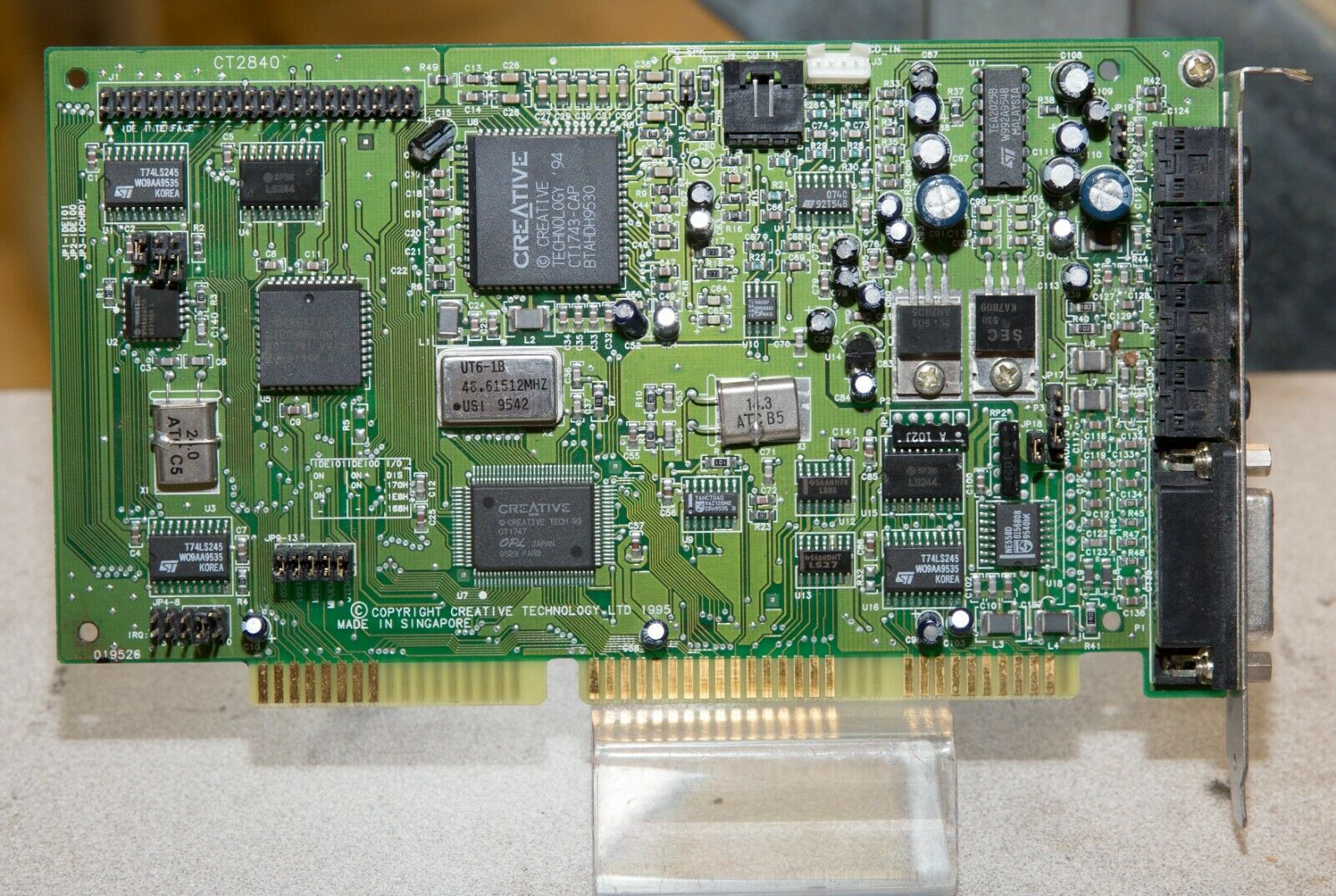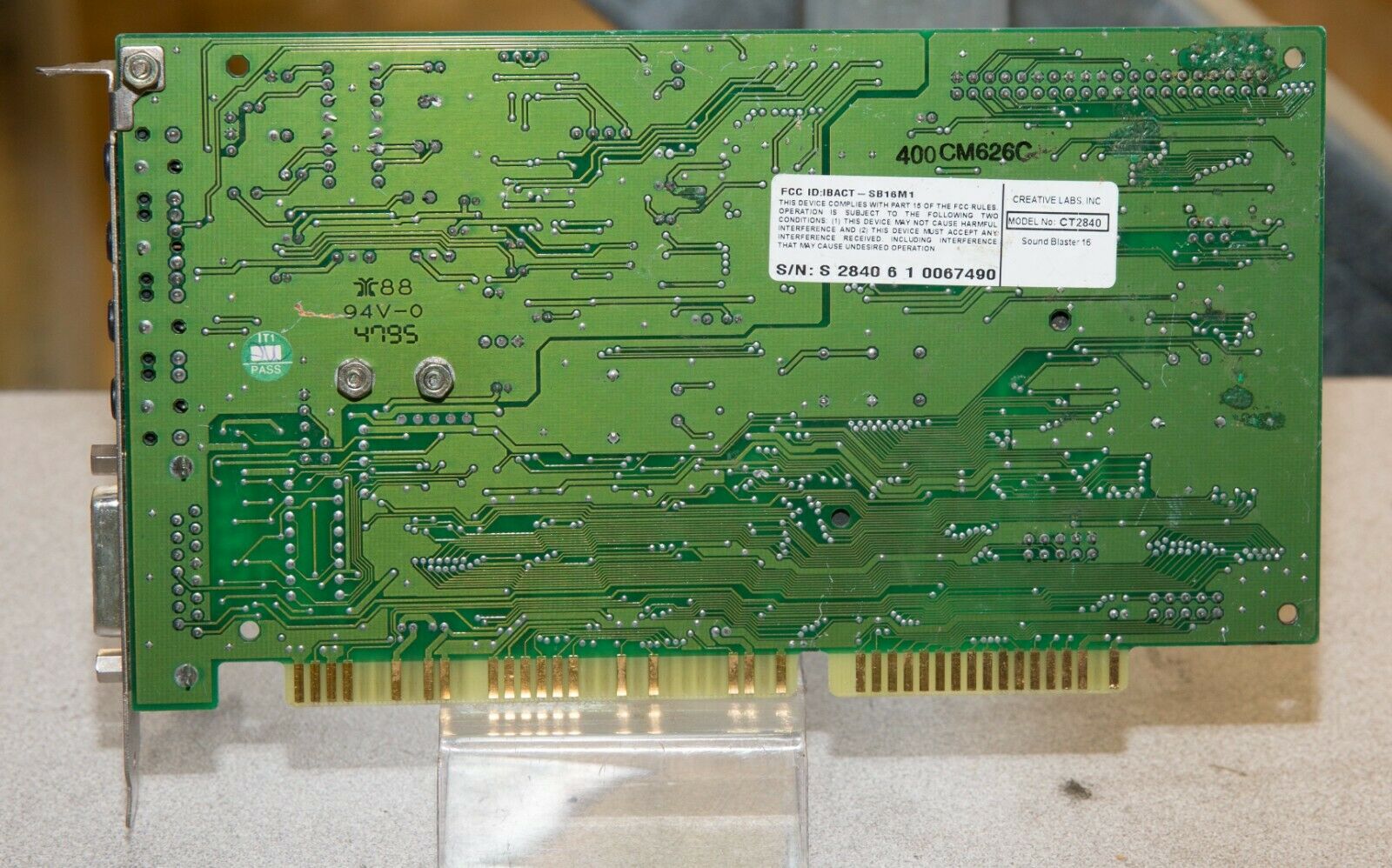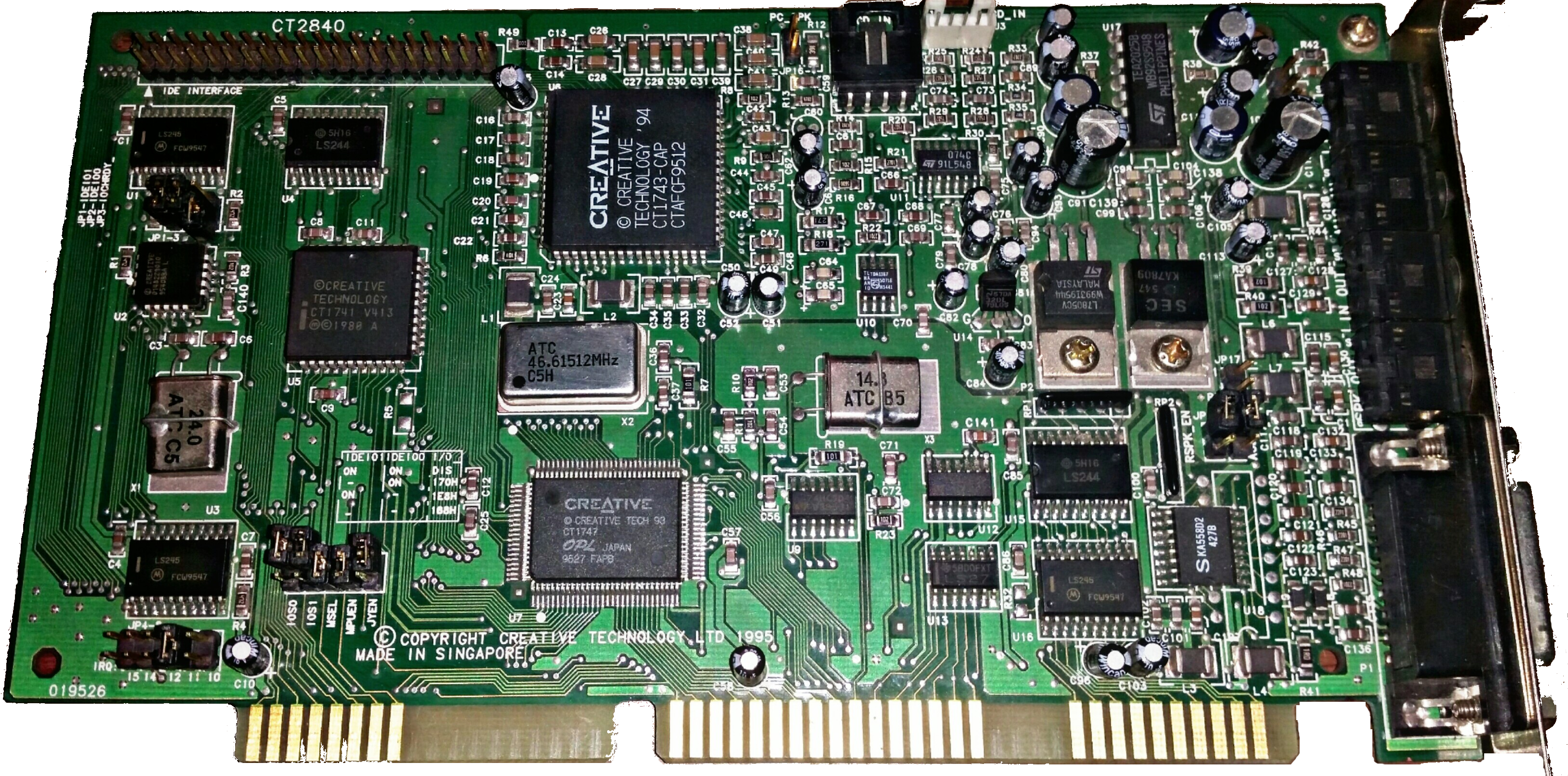Sound Blaster 16 (CT2840)
The CT2840 was a "Value Edition" card, and was the OEM version of a CT2291.
|
Released | 1995 |
| Bus | ISA 16-bit | |
| FM Synth | (Integrated Yamaha YMF262 in CT1747) | |
| Audio Codec | None | |
| Standards | Ad Lib, Sound Blaster, Sound Blaster Pro, Sound Blaster 16 | |
| Ports | Speaker-Out, Mic-In, Line-In, Line-Out Game/MIDI port |
|
| CD-ROM | IDE | |
| Wavetable | Wave Blaster header | |
| Plug & Play | No (Auto-Init only) | |
| FCC ID(s) | IBACT-SB16M1 | |
| Price | - | |
| See Also | Sound Blaster 16 (CT2290) |
The CT2840 was a "Value Edition" card. It was the OEM version of a CT2291.
The card is known for its low noise.
Board Revisions
Known board revisions include 19526.
It got the rarely-used CT1743-CAP mixer chip and the CT1741 DSP chip with DSP v4.13
(both with hanging note bug).
Competition
The Sound Blaster 16's primary enhancement over its predecessor (the Sound Blaster Pro) was its capability to playback 16-bit audio for a crisper, cleaner sound. Unfortunately, this wasn't heavily adopted by games developers who continued to use lower-quality samples. Because of this, buying a Sound Blaster 16 really didn't offer any benefit over a much cheaper 8-bit audio card unless you were into recording your own stuff. The marketing department at Creative Labs didn't care, however, and people bought Sound Blaster 16s like they were going out of fashion, thinking 16 bits were always twice as good as 8.
In 1995, the sound card market was awash with choice. Aztech as always were hot on the heels of Creative with a number of new cards that undercut Creative on price. Some of these included their end-of-2nd-gen Sound Galaxy Pro 16 II and Orion 16, and their brand new 3rd-gen cards such as the Waverider 32+,Washington 16, and Multimedia Pro 16.
Crystal launched their first chipset with an integrated FM synthesizer with the CS4232, and this found its way onto several off-brand cards.
ESS Technologies' introduced their ES1688, with ESFM(tm) FM synthesis, six-channel mixer, 16-bit stereo recording and playback, MPU-401 interface, and wavetable support with no hanging note bug.
OPTi released a number of new chipsets for all markets, including the 82C924 and 82C930 (both with reliance on an external FM synth), and the 82C925 with an embedded FM synth called OPTiFM(TM).
MediaVision were driven out of business in December 1994 due to fraud allegations, so we wouldn't see anything new in 1995 from them - a real shame as their cards were excellent quality.
Turtle Beach closed out their 2nd-generation cards in 1995, releasing the Tropez series and the budget Monte Carlo, all of which were Ad Lib and Sound Blaster Pro-compatible. The Tropez cards all came with onboard wavetables while the Monte Carlo offered a software-based wavetable and a hardware wavetable header if you wanted the real thing.
In the Media
Setting it Up
There is no setup or installation details on file for the Sound Blaster 16.
Downloads
Operation Manual Get in touch if you can provide this missing item! |
DOS and Windows 3.1 Utility Disks The original Sound Blaster 16 DOS and Windows 3.1 installation disks, marked Sound Blaster 16 |
. DOS and Windows 3.1 Utility Disks The original Sound Blaster 16/AWE DOS and Windows 3.1 installation disks, marked SDR-31STD-1-US (Revision 1). |
DOS and Windows 3.1 Utility Disks The original Sound Blaster 16 Value Edition disks, marked Sound Blaster 16 S16V-STD-01-ENG. |
More Pictures



Sound
Blaster 16 (CT2840, rev. 19526)
